Sam Tamposi: A Man Who Made a Difference
This article, originally entitled “Real estate gurus drew big names – Tamposi and Nash made southern tier,” is reprinted by the kind permission of the Concord Monitor and New Hampshire Patriot. Our thanks to Mike Pride, Editor. © 1999, 2001 Concord Monitor and New Hampshire Patriot. Thanks also to Sam’s daughter Pepper Rae for use of family photographs.
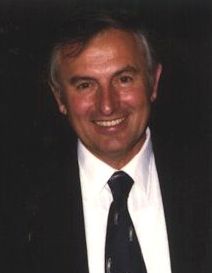
Sam Tamposi Sr., 1979
Sam Tamposi Sr. and Gerald Nash lived by their word and launched multimillion dollar development projects with just a handshake. The next time you drive through Nashua and the rest of New Hampshire’s southern tier try to imagine fallow land, shuttered mills and laid off workers loitering along vacant storefronts. That image doesn’t come easily, especially when you’re tied up in commuter traffic and corporate headliners such as Fidelity Investments, Anheuser Busch, Coca-Cola, Raytheon, Sylvania, Sun Chemical, Kollsman Instrument and Honeywell stare at you in every direction.
Tamposi and Nash lured scores of these firms, many from Massachusetts, to New Hampshire by selling them land or swiftly developing factories and office buildings for their workers. And when they weren’t wheeling and dealing real estate, Tamposi and Nash played kingmaker. State representatives, governors, U.S. senators and presidents spanning three decades owe debts to the two men from Nashua.
But in the 1950s, their hometown and the rest of the state reeled when major employers closed their textile and shoe plants and migrated south for cheaper labor. The economic exodus edged Nashua dangerously close to becoming a ghost town. But a Friday night poker match nearly 40 years ago served as a pivotal moment in Nashua’s emergence as a center for economic development. That’s when Sam Tamposi, the son of a Romanian immigrant, met Gerald Nash, a fourth-generation box maker.
Tamposi was a Dale Carnegie graduate and a plunger at the card table. Nash was a detail man and more circumspect. But both men knew what hard work was and how to sell when nobody was buying. “We hit it off immediately,” recalls Nash, who is now 75. His longtime business partner died of cancer in 1995.
During their heyday in the 1960s and 1970s, Tamposi and Nash developed 120 acres of commercial and industrial land per year, or about half of the state’s economic growth during that period. On a handshake, they developed a 125,000-square-foot building for Digital Equipment Corp., which moved in before signing a lease. As Nashua grew, so did the surrounding communities of Hudson, Merrimack, Amherst, Hollis and Litchfield.
Former governor Walter Peterson credits Tamposi and Nash with playing a major role in turning a region on the brink of decay into a suburban hotbed of technology and high paying jobs. Today, one in five of the state’s manufacturing jobs are in Nashua, Hudson and Merrimack.
“They were important to all of New Hampshire,” said Peterson, who grew up next to Nash and was a high school classmate of Tamposi. “They were both frenetic, hard-driving kind of guys who had a lot of confidence.” But Tamposi and Nash didn’t just sell land. They first sold New Hampshire, its tax advantage over Massachusetts and the work ethic of its residents. They were golden long before hipsters started using the word to describe everyday occurrences. Admirers called Tamposi “King Midas.”
Nash offers a different comparison. “I liken land to wine. After you squeeze the grapes, you put it away, you age it and it gets more and more valuable,” he explained recently in a telephone interview from his home in Florida. “We had a good ability at looking at land and seeing its value in the future.”
They were patriots, too. They believed no one owed them anything, but if they worked hard good things would happen. Nash fought in Italy during World War II in the U.S. Army’s 10th Mountain Division. He survived an intense five-month campaign that exacted a 40 percent casualty rate on his unit. Tamposi’s service came later during the Cold War when he saved the country from embarrassment at the hands of the Soviets.
Both men were dedicated Republicans who probably had to pinch themselves when their fund-raising efforts landed them in the close company of U.S. presidents and a long line of New Hampshire governors. With their help, John Sununu became governor, Warren Rudman a U.S. senator and George Bush a president.
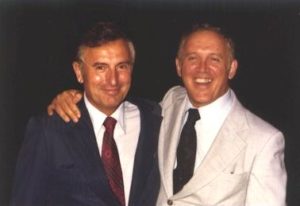
Sam Tamposi and Senator Warren Rudman
Humble beginnings
Nasi Tambose, Sam Tamposi’s father, emigrated to the United States in 1907, when he was 16 years old. Born in a village in Avdella, Macedonia, he grew up in a territory where the borders constantly changed. He was considered a Vlach, a mix of Bulgarian and Romanian. Ethnic differences in that region, much like today, could be bloody and fatal: Turkish soldiers murdered Nasi Tambose’s father.
After coming to America, Nasi Tambose moved his family from New York City to a farm in Nashua. Born in 1924, Sam Tamposi grew up baling hay, milking cows and caring for vegetables. His destiny wasn’t farming, though. He was a born salesman whose credo was, “Hustle is the name of the game.” Indeed, Sam Tamposi could sell.
His first deal was a $2 junk car he sold for $10, according to his oldest son, Sam Tamposi Jr.
He sold everything from airplane rides at Nashua’s airport to Electrolux vacuum cleaners door-to-door. When other salesmen quit at dinner time, Sam Tamposi continued knocking on doors late into the evening. Tamposi earned $1,000 his first month selling vacuum cleaners. The feat earned him a trip to the Waldorf-Astoria.
In the mid-1950s, his native Nashua was losing its economic velocity. In one fell swoop, Textron shut down, leaving 1,500 workers scrambling for jobs. About that time, Tamposi entered the real estate game, investing his life savings in an abandoned building. Space back then could be had for 25 cents a square foot.
Tamposi’s first development project was a building for McCallister Scientific in 1959. A few years later, he met Nash at the poker match. Like Tamposi, Nash grew up selling. As a child, he bought a metal wagon from his sales of Larkin Soap. He sold fireworks in the summer and sold popcorn balls to Works Progress Administration workers for a nickel apiece during the Depression. At Christmas, he still gives popcorn balls to friends.
When he got older, Nash worked in his father’s paper box factory and made 25 cents an hour. His father was a businessman from the old school. “His word was his bond. You did the right thing. You kept the truth,” said Nash, who learned his father’s philosophy while accompanying him on business trips.
Before meeting Tamposi, Nash dabbled in real estate, but most of his time was spent at the Nashua Paper Box Co., where he was a part owner. After selling his stake to his brother, Ralph, Nash joined Tamposi full-time.
The dynamic duo
When making a deal, Tamposi and Nash answered to no one but themselves. They snapped up land and developed buildings on speculation, which means they did not have tenants signed up before construction began. “We weren’t afraid to own a building,” Nash said. “We didn’t bet anything we couldn’t back up.”
Both men had a knack for looking at a piece of raw ground and seeing its possibilities. Once settled on a site, they financed their plans through a combination of their own equity and bank financing. Once they established a track record of success, lenders were eager to finance their projects. It wasn’t unusual for them to have four or five projects going simultaneously. In all, they developed about 120 commercial buildings.
“Sam and I, when we were developing in our prime, could borrow from any bank in New Hampshire,” Nash said. The duo even cracked the reserved exterior of Prudential Insurance Co. “They wouldn’t loan, but they usually gave us a green light,” Nash said.
Although they were gung ho, they resisted the temptation of becoming overextended. Most times they only took out loans on 50 percent of a project’s cost, even though banks sometimes offered 110 percent of value.
Sam Tamposi Jr. said his father was remarkable in the way he made direct contact with a company’s resident deal maker. By building lead upon lead, he developed a rapport with corporation presidents and business leaders throughout New England. “He had a unique ability to get from point A to point B,” Tamposi Jr. said.
Once in the door, Tamposi and Nash introduced prospective clients to mayors and the governor. This sort of treatment, and the promise of a new office building in less than four months, appealed to out-of-state businesses used to red tape in Massachusetts. “We didn’t have to get an answer from anyone except ourselves,” Nash said. “They named the price. We got it done fast. We knew everybody and got the projects going.”
Nash said Tamposi wasn’t somebody who enjoyed working with details. Instead, he looked at projects in broad strokes. “My father really wasn’t the greatest keeper of records,” Tamposi Jr. said. “He kept things in his head.” After a project got going, Nash said it was usually his job to watch over the construction of a building. Though the men worked closely together, they kept separate offices.
“We had our differences,” Nash said. “We’d yell at each other. We kept separate offices for when one of us was miffed we weren’t rubbing elbows. It makes for better relations.” Their relationship also allowed for either one to free-lance without the other. One such deal came in 1963 when Tamposi announced the development of the New England Automotive Center, a consortium of about a dozen dealerships in one location. The idea was novel and controversial. Nashua downtown merchants opposed Tamposi’s project because it would move several dealerships off Main Street.
The group went to court and won an injunction against Tamposi’s project. He ignored the court order, however, risking his own capital by moving forward with the project, Tamposi Jr. recounted. Tamposi Sr. fought his opposition by going door-to-door asking neighbors personally to support his plan. He also convinced Detroit auto makers to back his development. In the end, Tamposi won, creating the first auto village in the country. The concept has become a standard in the industry.
“He was unafraid of failure,” Tamposi Jr. said. “He had a great vision at succeeding because he could tolerate risk other people would shy away from.” Tamposi and Nash’s projects didn’t always pan out in New Hampshire. But more than once, they exported their ideas to other parts of the country.
In 1965, the men wanted to develop Nashua’s first high-rise office building. But New Hampshire lenders wouldn’t finance the project. It didn’t matter. Their idea became the Centurion, a 145,000-square-foot high rise in West Palm Beach, Fla., Tamposi Jr. said.
A major disappointment for the men came in the early 1970s when they unveiled an idea for a massive mixed development project in Merrimack. The planned urban development of 3,500 acres called for a self-sustaining community including retail shops, housing, schools and a fire station.
“It would have been like Reston, VA.,” Nash explained.
The opposition was fierce. Partly due to Tamposi and Nash’s industrial projects in Merrimack, the town’s population would nearly quadruple from 4,000 residents in 1960 to 15,400 residents in 1980. Critics said the developers weren’t interested in the environment or orderly growth.
Citizens for Planned Orderly Growth said a vote for the project would be a vote for Central Park muggings, more traffic congestion, more crime and no birds, Tamposi Jr. recalled. The alarmist strategy worked. The proposal was panned.
Nash and Tamposi changed their tactics. They sold 950 acres of the land to Digital Equipment Corp. Those office buildings now are occupied by Fidelity Investments. And piece by piece the would-be master-planned community became a thriving enclave of office and industrial development. But Nash and Tamposi’s idea did not die at the hands of the Merrimack Planning Board. Instead, they squirreled it away for another time in another place and they would enlist the support of a baseball legend to help sell their idea.
In the early 1960s, Tamposi and Nash started assembling land in Citrus Hills, Fla., which featured rolling terrain of watermelon fields and forests 70 miles north of Tampa. As Nashua boomed in the 1970s, the developers waited patiently for their Citrus Hills plan to bear fruit. Meanwhile, the men enjoyed their wealth and influence. They helped elect their friend Walter Peterson governor in 1969. They were confidants of Barry Goldwater, Gerald Ford and Richard Nixon. In the 1980s, they would lunch with Ronald Reagan and George Bush. Today, Nash counts Bob and Elizabeth Dole as his close friends. He thinks Elizabeth would make a good president.
“We both thought you should be involved in politics,” Nash said. “You have to back up what you like.” In 1977, after a member of the Yawkey family died, Tamposi was invited to become a limited partner in the ownership of the Boston Red Sox. Warren Rudman vouched for his credentials. “This became a great period of relaxation for him and provided a respite from planning board meetings,” Tamposi Jr. said.
Tamposi became a serious baseball fan and started making trips with the team. During that time, he struck up a relationship with slugging legend Ted Williams. The Splendid Splinter loved to fish and had a favorite spot not far from the land Tamposi and his partner were accumulating in Citrus Hills. After a tour, Williams became a spokesman for the project and eventually built a home there. The first development on the 4,000 acres of land came in 1982.
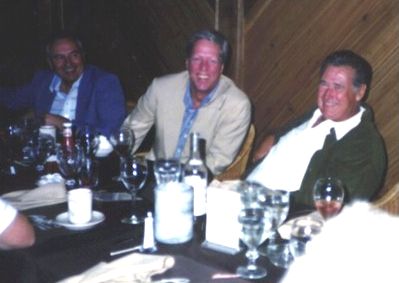
Sam Tamposi, David Hartman and Ted Williams
Five years later, the dream of a master-planned community was well under way. Nashua wasn’t faring too badly either. Money Magazine ranked the town as America’s No. 1 place to live. Tamposi and Nash were rich men who still got jazzed creating deals. When asked about a 1979 magazine article that put his net worth in excess of $20 million, Tamposi told a Boston Globe reporter, with a wink, “Well, that was several years ago.” “Money became secondary to making deals,” Tamposi Jr. said. “He liked seeing other people succeed. He had a lot of partners who did well. He always liked to see people improve themselves.”
Despite his success, Tamposi still carried his father’s values and the immigrant mentality of living simply. A night out meant playing Scrabble with his sister, according to a 1983 Globe profile of Tamposi. He lived in a modest, $90,000 home in Nashua. Pleasure came from introducing his six children to the real estate business. They survived a bankruptcy reorganization in the early 1990s and continue to make real estate deals. Nash is retired for the most part, but his children also are in the real estate business.
“I’m tired, not retired,” Nash quipped. “I miss every one of my friends that have passed away, especially Sam.”
‘Never seen anything like it’
Sam Tamposi Jr. said it wasn’t like his father to boast about himself, but in his later years he was particularly proud of a real estate deal he didn’t make happen. While governor, Peterson said he got wind of a real estate deal that was sure to embarrass the United States at the height of the Cold War.
“I got word, but I can’t remember from whom, that a beautiful piece of property in the Washington D.C. area was going to be sold to the Russians for an office building for their embassy employees,” Peterson recalled. “It was not beyond the pale to think the Soviets would use it as a center for subversive espionage.” Peterson said he enlisted Tamposi and they both flew to Washington D.C. to talk to the owner of the property.
“Sam was a very patriotic person. He sat down with this fella and they hit it off. Sam told this man how his family had been given a great opportunity in this country,” Peterson said. “I was right there. Sam did most of the talking. He convinced the owner not to sell the property and he withdrew it from the market. I’d never seen anything like it.”
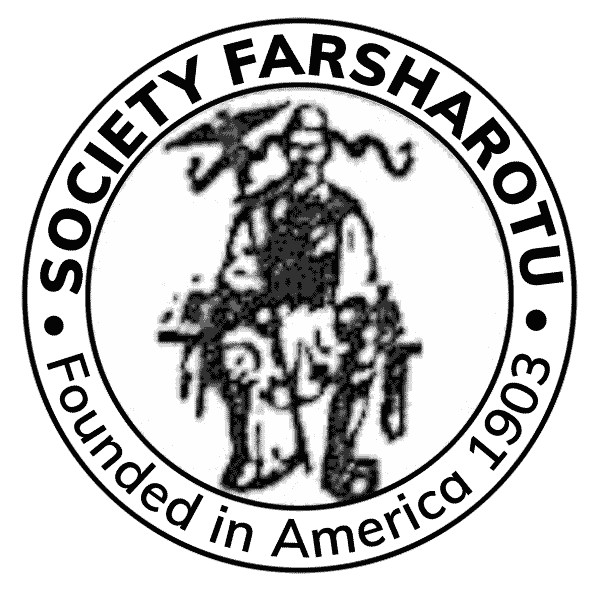
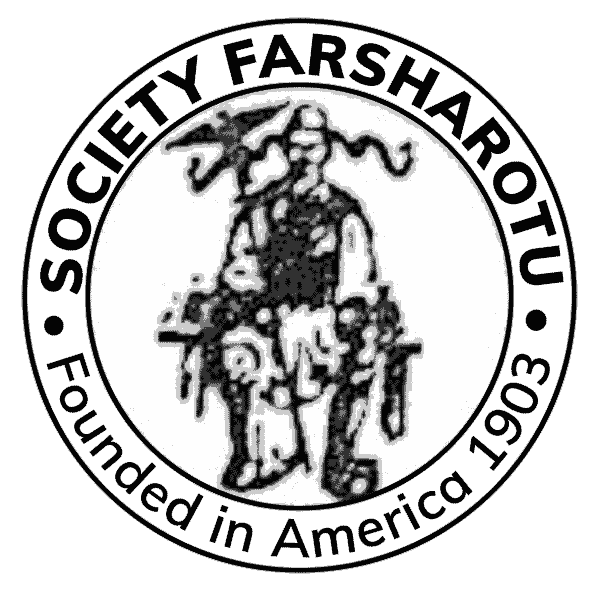
Responses